In the rapidly urbanizing landscape of Singapore, the demand for innovative urban planning solutions is paramount to accommodating the growing population while preserving the city-state’s unique cultural and environmental heritage. This project proposes an exploration of a playful design methodology to devise novel urban block typologies tailored to Singapore’s specific needs and constraints. This research aims to challenge traditional urban planning methodologies by offering dynamic, adaptable, and context-sensitive solutions.

Comprehensive Analysis of Singapore’s Urban Fabric
The project begins with a thorough analysis of Singapore’s urban fabric, considering factors such as population density, land scarcity, transportation infrastructure, and socio-cultural dynamics. By drawing upon existing urban planning theories and methodologies, as well as insights from local stakeholders, the research establishes a framework for the development of an urban block generator, which will facilitate innovative design solutions that cater to Singapore’s distinctive challenges.
Thesis Project Overview: Urban Playground
Our thesis project, Urban Playground, is centered on the hypothesis of developing a toolkit for designers to explore master planning, aimed at creating a happier city for all residents. Initially, we focused solely on using the tool for design and planning. However, we later recognized the importance of expanding its functionality to address factors beyond the conventional scope of urban planning, encouraging a holistic approach that includes social and emotional well-being.
Evaluative Metrics and Case Studies
Through comprehensive case studies, we evaluated both quantitative metrics—such as spatial efficiency, walkability indices, and environmental sustainability indicators—and qualitative assessments of user satisfaction and community engagement. For example, a case study of a community park revitalization illustrated the positive impact of increasing green spaces on both physical health and social interaction among residents, thereby enhancing overall quality of life.
Interaction-Based Urban Block Types
This thesis proposes that interaction-based urban block types, created via generative algorithms and real-time predictive analytics, have the potential to transform sustainable urban planning. Generative algorithms use data to automatically create design options based on set parameters, while predictive analytics helps forecast the impacts of various design choices. By utilizing ecological data, these block types are optimized for solar radiation, effective daylighting, and green plot ratios in accordance with city guidelines and participatory design inputs.
This approach democratizes the design process, allowing non-experts to contribute, thereby improving environmental performance and fostering citizen participation in urban development. The primary goal is to create sustainable cities that enhance the happiness and well-being of their inhabitants.
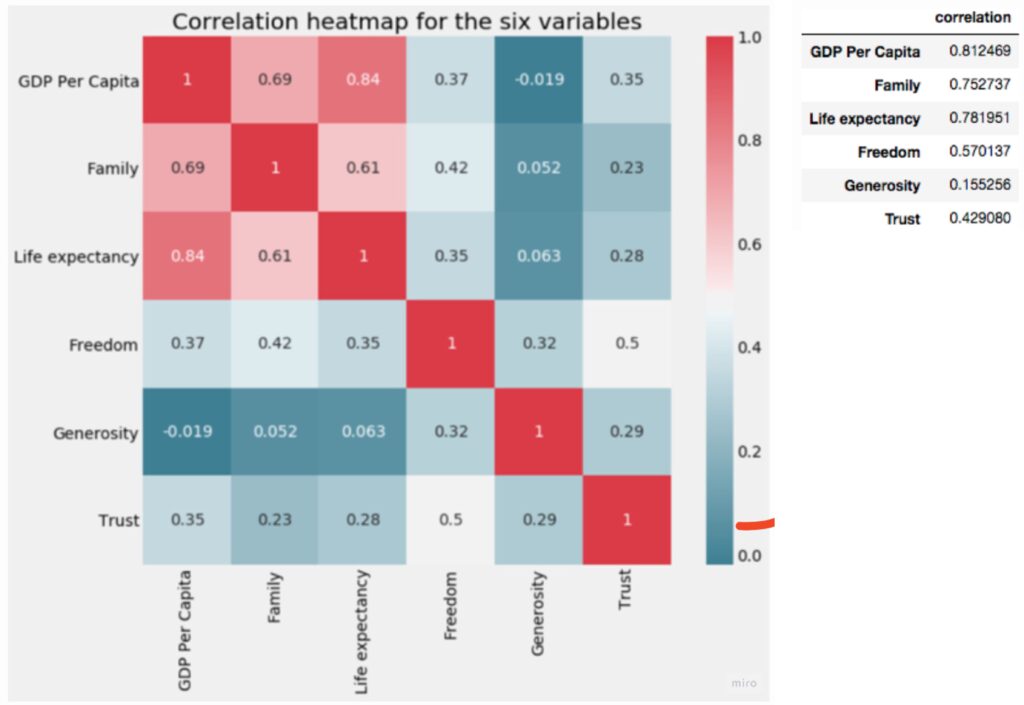
Structure of the GNH Index
The framework consists of nine constituent domains of Gross National Happiness (GNH): psychological well-being, health, time use and balance, education, cultural diversity and resilience, good governance, community vitality, ecological diversity and resilience, and living standards. These domains collectively encompass 33 GNH conditions expressed as indicators, emphasizing different aspects of well-being and human flourishing.
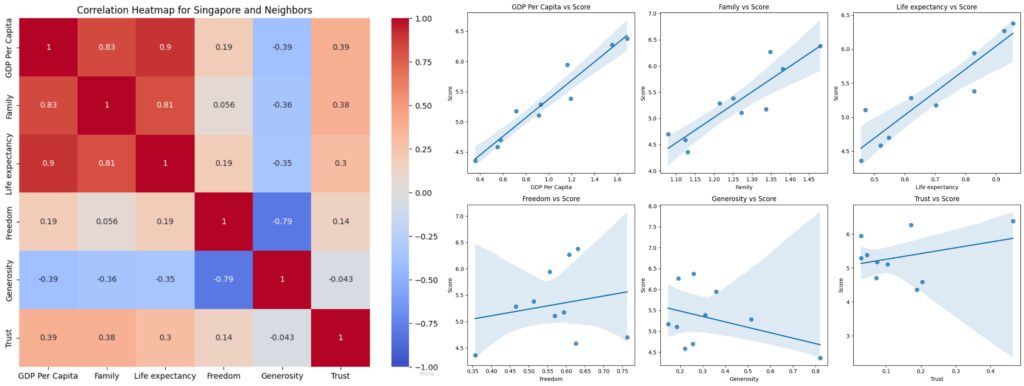
Data Resources for Urban Planning
Research on Singapore’s national data has been conducted, gathering valuable insights for urban design. Leveraging a wealth of information from various sources—such as transportation networks, population demographics, and environmental factors—this research aims to create more efficient, sustainable, and livable urban spaces. By analyzing trends in housing, mobility, and land use, planners can optimize space utilization, enhance connectivity, and improve the quality of life for residents. Singapore’s emphasis on data-driven urban design has allowed the city-state to address challenges such as limited land resources and population density, positioning it as a global leader in smart city development.
Defining the Research Indices: Freedom, Generosity, and Trust
- Freedom: This index measures the degree of autonomy and flexibility that residents have in influencing the design and use of urban spaces, including factors like accessibility, mobility, and the availability of diverse housing options.
- Generosity: This index evaluates the extent to which urban spaces foster community well-being and social interaction, covering aspects like public amenities, green spaces, and provisions for communal activities.
- Trust: This index assesses the level of confidence residents have in the safety, governance, and transparency of urban spaces, including elements such as security, community engagement in decision-making, and the presence of reliable public services.
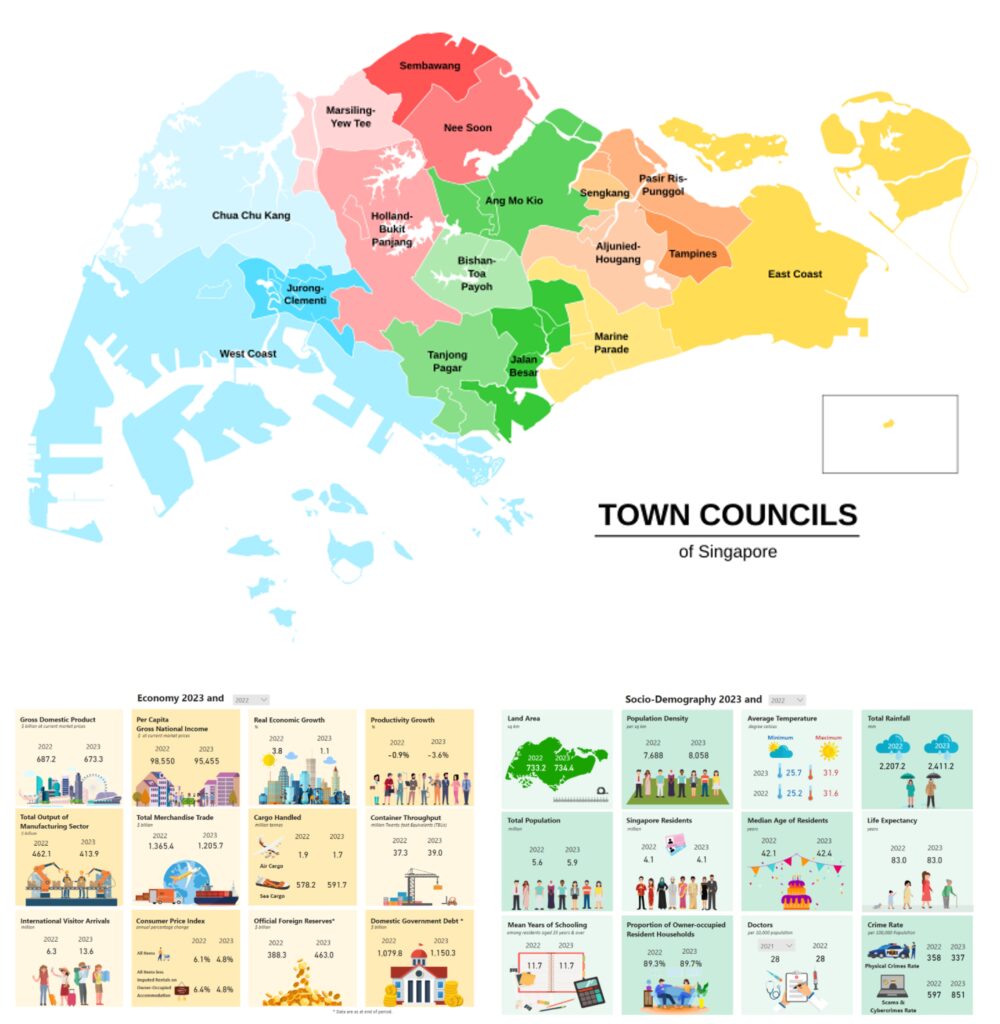
Establishing a Participatory Framework
- Community Workshops: Organizing workshops where local residents, planners, and stakeholders collaboratively define what Freedom, Generosity, and Trust mean in their neighborhood helps tailor these indices to each urban block’s specific socio-cultural context.
- Digital Platforms for Engagement: Developing digital platforms or mobile applications that allow residents continuous engagement with the urban planning process enables them to provide input on design options, vote on proposals, and track urban block development progress.
Incorporating Indices into Machine Learning Models
- Data Collection and Integration: Collecting data on existing urban conditions related to the Freedom, Generosity, and Trust indices—including surveys, spatial analyses and demographic information—ensures that the generated designs reflect the community’s priorities.
- Algorithmic Adjustments: Modifying AI algorithms to prioritize design solutions that score high on the Freedom, Generosity, and Trust indices is essential. For instance, designs that offer diverse housing options and flexible spaces could score higher on Freedom, while those that include ample public amenities might score higher on Generosity.
We then refer back to our Singapore national database to extract key data that connects to our Freedom, Generosity, and Trust indices, providing scores that identify similar town characteristics for the new design masterplan variation.
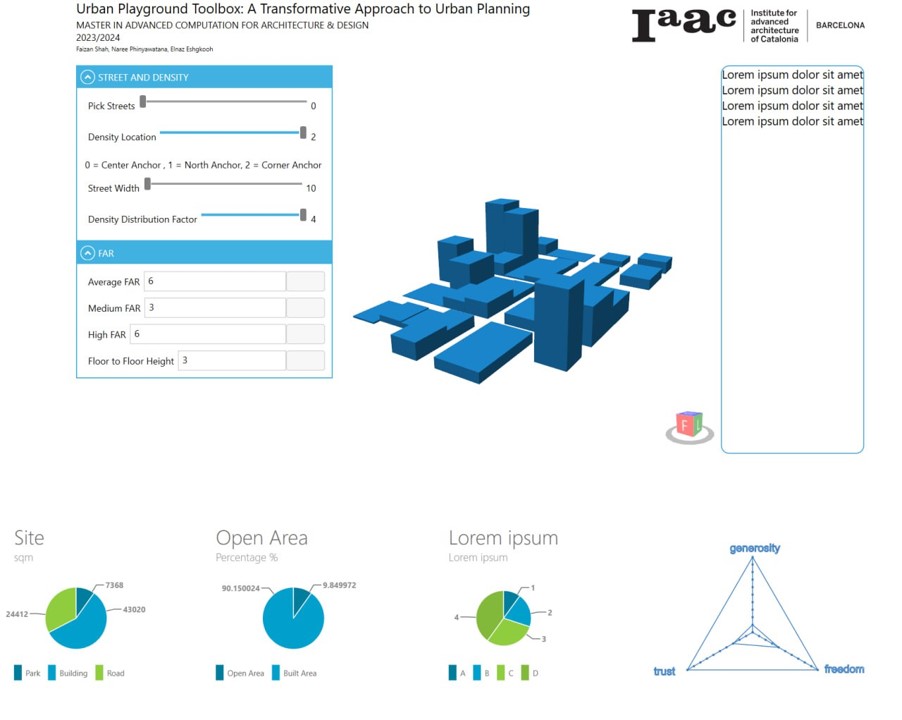
Urban Playground Toolkit
Our toolkit is built on a Rhino base file that serves as a foundation, while our Urban Playground Toolbox allows users to select and update various inputs, including street configurations, density locations, street widths, and density distribution factors. Additionally, users can adjust three tiers of Floor Area Ratio (FAR) and floor-to-floor heights to initialize the starting point of the masterplan.
Within the Rhino interface, users can manipulate street lines, add parks, and include additional subway stations to further customize the masterplan. This flexibility enables the generation of a greater variety of neighborhood configurations. All inputs from the toolbox interface and Rhino elements will combine and be calculated into scores, leading to three main outcomes: Freedom, Generosity, and Trust. Finally, these scores are linked back to our original Singapore database to indicate the closest town that shares similar traits to the proposed design masterplan. This connection aims to educate and familiarize users with the Singapore context as it relates to the proposed design masterplan.
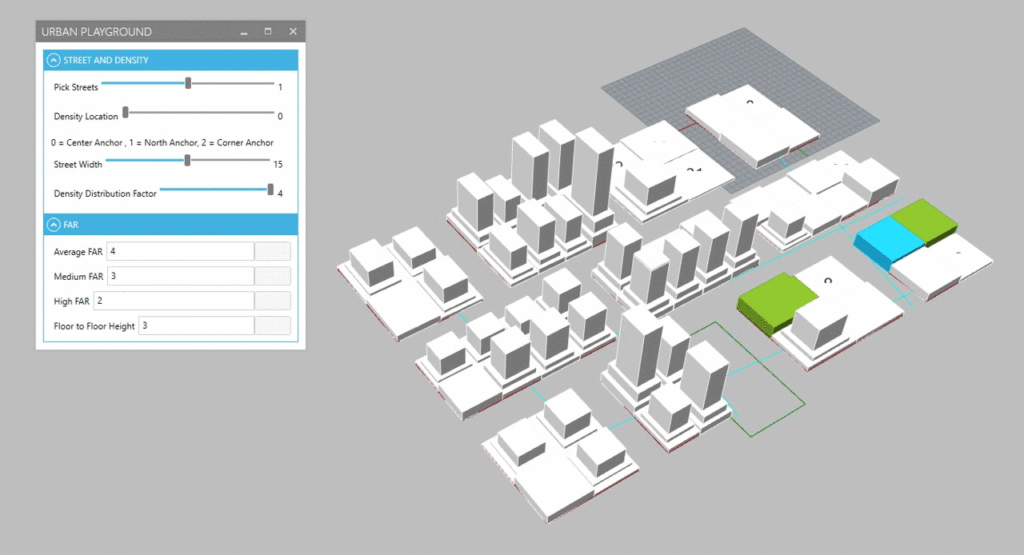
Conclusion
In summary, the Urban Playground project endeavors to redefine urban planning in Singapore by integrating innovative design methodologies and community engagement. By focusing on the indices of Freedom, Generosity, and Trust, our research aims to create urban block typologies that effectively meet the practical demands of a growing population while enhancing the overall well-being and happiness of residents. The utilization of data-driven insights and participatory frameworks ensures that the voices of all stakeholders are heard, fostering a sense of ownership and connection to the urban environment.
As we advance towards developing a flexible and dynamic urban toolkit, we aspire to lay the groundwork for sustainable and livable cities that reflect the values and aspirations of their communities. Ultimately, this project positions Singapore as a model for innovative urban design in the global arena, inspiring other cities to adopt similar approaches that prioritize human well-being in urban development.

